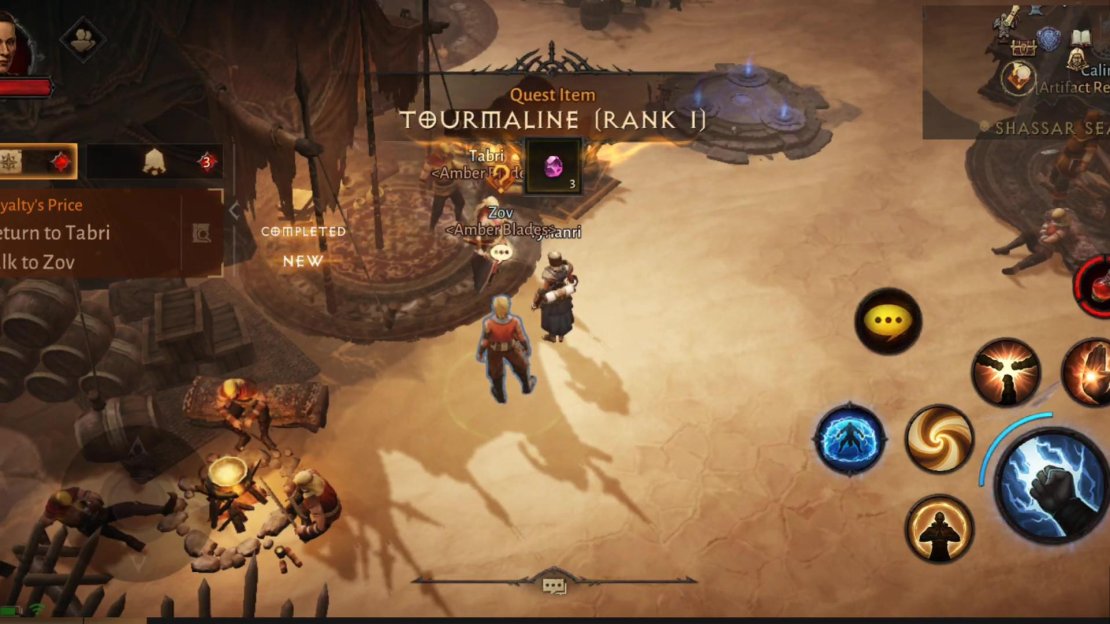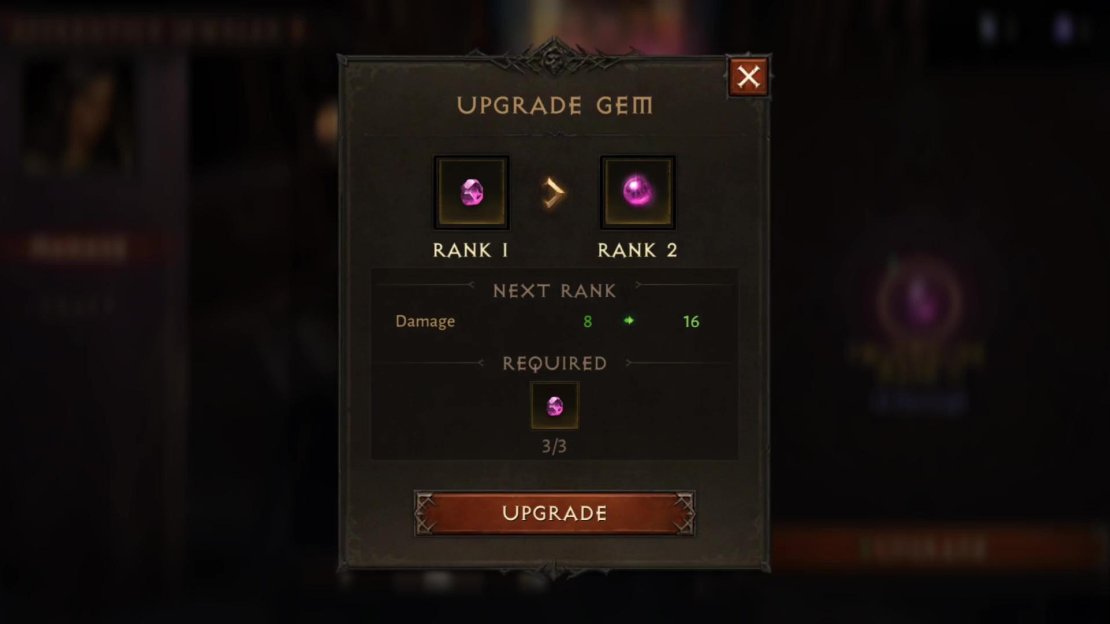Information about Normal Gems in Diablo Immortal, including how to obtain Normal Gems and how to rank up Normal Gems.
Complete the main quest objective “Loyalty’s Price” to obtain thee Tourmaline gems. These will likely be the first Normal Gems you obtain.
What Are Normal Gems?¶
There are two types of Gems in Diablo Immortal, Legendary Gems and Normal Gems. Despite their names, you’ll almost certainly obtain a Legendary Gem first, during the main quest objectives “Legends of Eld” and “Braving the Rift” (both of which are part of the game’s [Elder Rift tutorial]). After that, you’ll need to continue the main questline until you complete the objective “Loyalty’s Price”, upon which you’ll obtain three Tourmaline gems. This serves as your introduction to Normal Gems, after which you can obtain them through various means (see “How to Get Normal Gems”, below).
Normal Gems are reminiscent of Diablo 2’s gems inasmuch as they provide simple, generic buffs to a single stats, get stronger as they’re upgraded, and can be upgraded by (mostly) combining three gems of the same type together. They’re not as fancy as Legendary Gems and aren’t as important to your overall success, but they’re still too useful to neglect.
Normal Gems must be socketed into the correct, color coded sockets on Secondary Gear.
Normal Gem Types and Socket Colors¶
Only one Legendary Gem of each type can be equipped at a time, but no such limitation exists with Normal Gems. Instead, there are six types of Normal Gem split into colored pairs, as follows:
| Normal Gem | Socket Color |
|---|---|
| Aquamarine | Blue |
| Sapphire | Blue |
| Ruby | Red |
| Tourmaline | Red |
| Citrine | Yellow |
| Topaz | Yellow |
Normal Gems are socketed into Secondary Gear (amulets, rings, gloves, belt and boots) and unlike Legendary Gems, the sockets for Normal Gems are not one-size-fits-all. Instead, sockets on Secondary Gear are color coded; only blue-class Normal Gems can be socketed into blue sockets, only red-class Normal Gems can be socketed into red sockets, and only yellow-class Normal Gems can be socketed into yellow sockets. Fortunately Secondary Gear can have multiple sockets per item, so you can get a good variety of Normal Runes despite them being split into three exclusive socket colors.
Below you’ll find a list of all the different Normal Gem types and their effects at Rank 1 and Rank 10:
| Normal Gem | Effect |
|---|---|
| Aquamarine | Armor +8 to +1,256 |
| Citrine | Potency +8 to +1,256 |
| Ruby | Life +80 to +4,800 |
| Sapphire | Armor Penetration +8 to +1,256 |
| Topaz | All Resistances + 8 to +1,256 |
| Tourmaline | Damage +8 to + 480 |
How to Get Normal Gems¶
Normal Gems can be obtained the following ways:
- Clear Hidden Lair events.
- Randomly rewarded for completing Bounties.
- Purchasing them from the Market in Westmarch
Somewhat less painful on your wallet than Legendary Gems, Normal Gems can be acquired through good old-fashioned gameplay, namely by completing your daily allotment of Bounties and by exploring Hidden Lairs when the event pops up. The former is limited, and the latter is random, so you can’t actively hunt for Normal Runes the way you can with Legendary Runes, but Normal Runes are generally less money-gated.
If you have cash to burn, like Legendary Gems you can buy Normal Gems via the Market in Westmarch.
You can upgrade Normal Gems by simply combining three Normals Gems of the same type and grade… at least until Rank 6.
How to Upgrade Normal Gems¶
Harking back to the glory of Diablo 2, Normal Gems can be upgraded simply by combining three of the same type and rank of Normal Gem… at least until Rank 6. For example, combine three Rank 1 Tourmaline gems and you’ll get a Rank 2 Tourmaline gem, smash together three Rank 2 Tourmaline gems and you’ll get a Rank 3 Tourmaline gem. From Rank 6 on you’ll need to introduce Echo Crystals as a secondary catalyst to the normal three gem formula. It’s going to take a good while to max out Normal Gems, but their potency increases significantly as they’re upgraded - at Rank 8 they have only half the maximum potency they can achieve by Rank 10.



No Comments